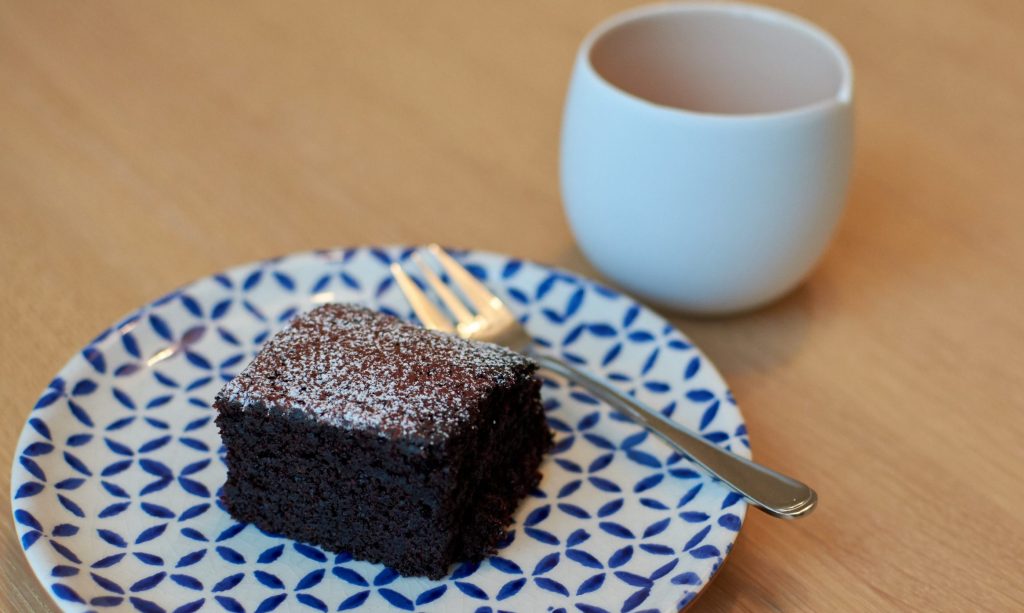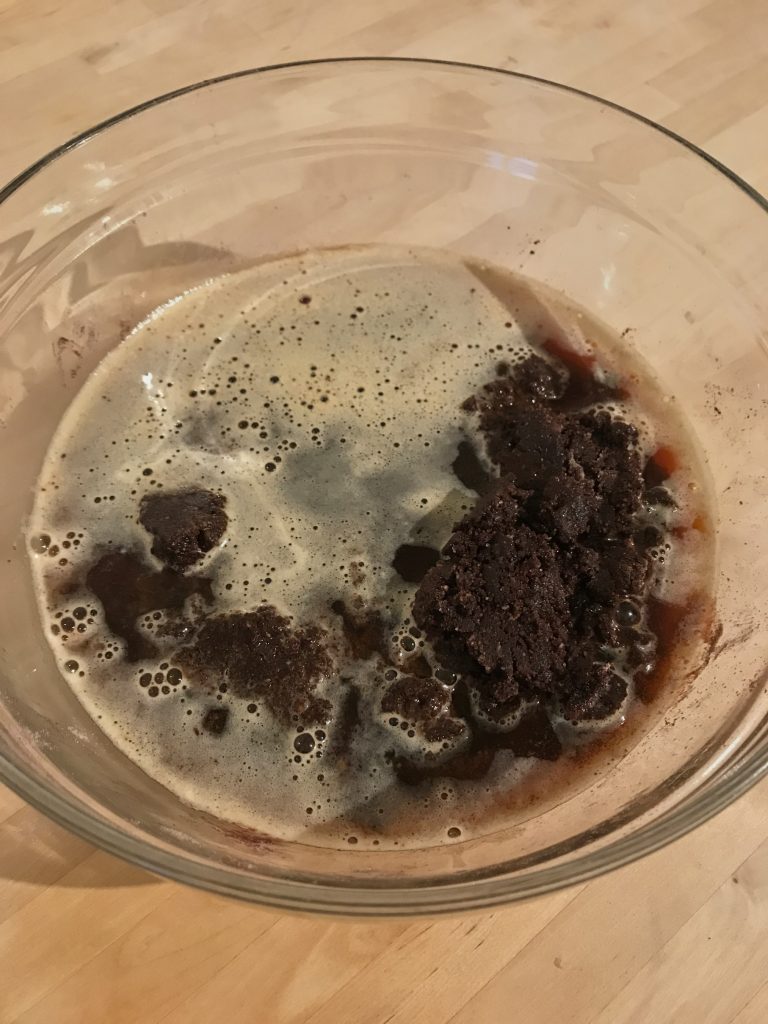preparation time: 15 minutes
cooking time: 30-35 minutes
emergency contact: really no need

This one is for those times when you want a moist, comforting chocolate cake rather than a rich, indulgent chocolate cake. The one-bowl aspect is a bonus.
Another bonus is that the recipe is extremely flexible. You can use all brown sugar or all granulated, or you can substitute some demerara or turbinado. For the liquid, you can keep things simple by using water only (the cake pictured here has 2 shots of espresso with water to make up the total volume). If you don’t want to add the egg, or you forget the vinegar, it still works fine (it will be slightly denser). If you forget it’s in the oven and over-bake it by 10 minutes, no problem. The cake is good with the glaze, or with a dusting of icing sugar and cocoa powder, or just as is.
For the cake:
flour* – 195 g (1 1/2 c)
cocoa powder – 60 g (3/4 c)
baking soda – 1 1/2 tsp
sea salt – 1/2 tsp
granulated sugar – 130 g (2/3 c)
brown sugar – 145 g (3/4 c)
olive oil – 120 mL (1/2 c)
egg – 1
liquid** – 290 mL (1 1/4 c)
optional flavourings – vanilla, orange zest
vinegar – 1 TbspFor the glaze (optional):
bittersweet chocolate – 100 g
cocoa powder – 1.5 Tbsp
olive oil – 2 generous Tbsp
corn syrup*** – 2 tsp
flaky sea salt – pinch* Can replace up to 50 g with almond flour
** Water, espresso, rum, red wine, buttermilk, combinations thereof…
*** Can substitute honey but will be less glossy
Preheat the oven to 170C/340F convection. Line and grease a 9-inch round cake tin or an 8-inch square cake tin. The batter is very liquid, lining the tin is recommended even if you’re not using a springform pan.
Combine the flour, cocoa, bakisng soda, salt and granulated sugar in a mixing bowl. Using a rubber spatula, stir in the brown sugar, olive oil and egg to get a paste-like mixture. Add the vanilla (if using) and half the liquid, whisk, add the rest of the liquid, and whisk until smooth (the batter is quite liquid). Finally, whisk in the vinegar, which will react with the baking soda to make bubbly streaks.
Pour the batter into the cake tin. Bake for 35 to 40 minutes, or until the top is springy and a tester inserted in the center comes out with just a few sticky crumbs (no wet or loose batter). Cool the cake in the pan on a wire rack for 10 minutes, then loosen around the edge with a knife and flip it out onto a cooling rack to cool the rest of the way.
If you are doing the glaze, place all ingredients in a pot and place over low heat on the stovetop, stirring constantly, until smooth. Alternatively, place all ingredients in a bowl and microwave in 15 to 30 second pulses, stirring between each until just melted. Whisk until smooth. Pour over completely cooled cake.
Storage: This cake keeps well for 2 to 3 days at room temperature, or up to a week in the fridge. You can also freeze part of it for later consumption, but best to leave it unglazed in this case.



